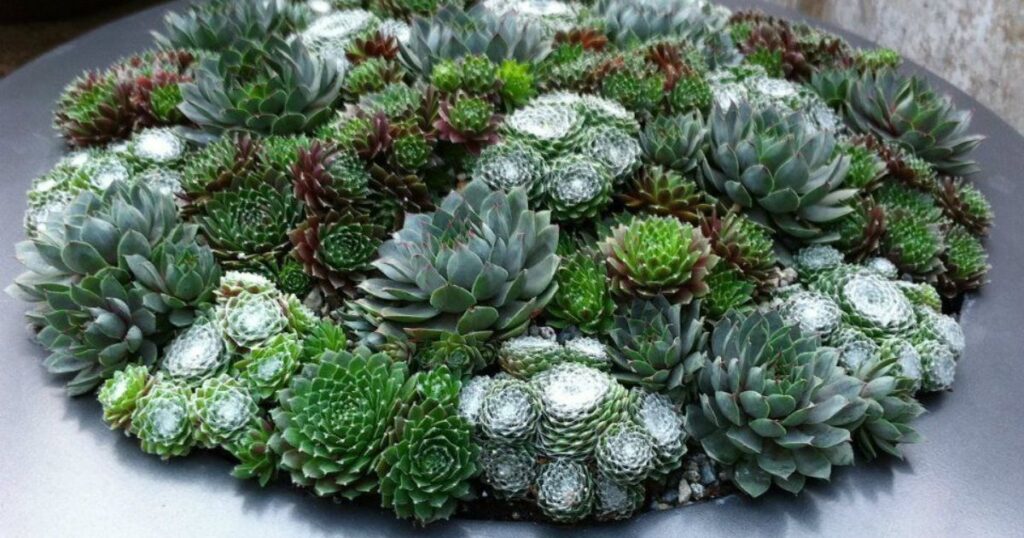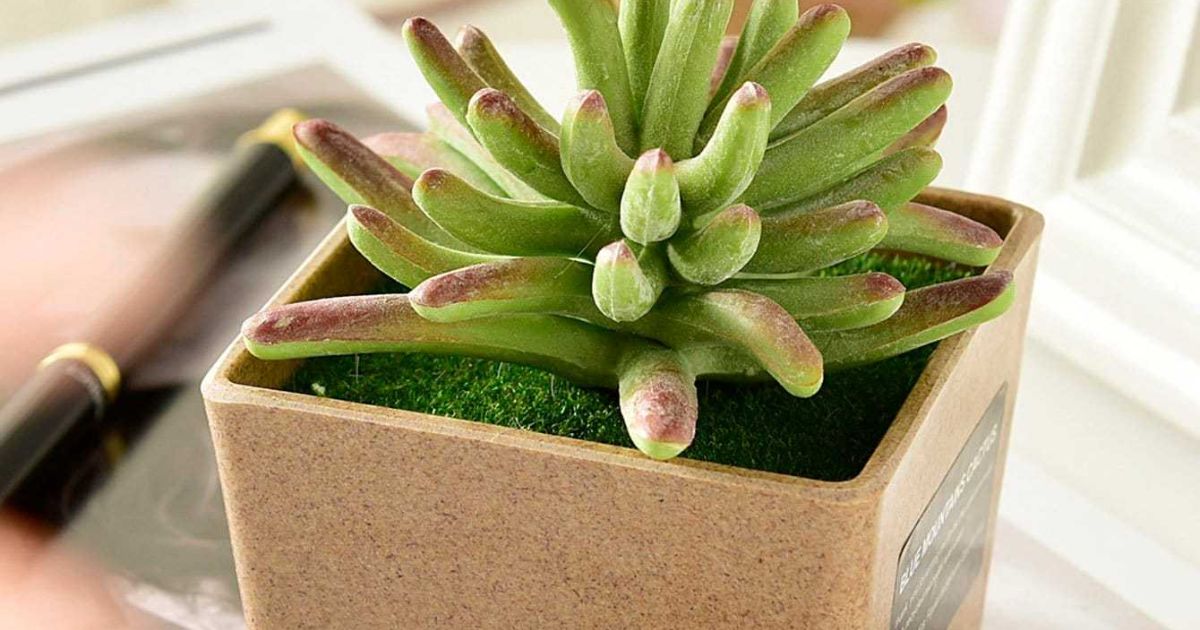Caring for succulents in winter involves providing them with less water, as they require less moisture in the colder months. Ensure they receive adequate sunlight to prevent stretching and etiolation. Protect them from frost and cold drafts, and consider moving them indoors if temperatures drop significantly. Proper winter care will keep your succulents healthy and thriving.
Are your succulents ready to brave the winter chill? Learn the essential tips on “How To Care For Succulents In Winter” to ensure they stay vibrant and healthy during the colder months. Get the inside scoop on nurturing your beloved succulents and enjoy a thriving garden year-round. Don’t wait, let’s winterize your succulents today.
Caring for succulents in winter involves reducing watering frequency to prevent root rot, providing adequate sunlight to prevent stretching, and protecting them from frost and cold drafts to maintain their health and vitality during the colder season.
Understanding Winter Needs
Before we delve into the specifics of winter care, let’s start by understanding what succulents need during this season.
Succulents in Winter – What Changes?
Succulents are well-suited to thrive in warm, dry climates. However, the conditions in winter can be quite different. Here’s what changes for succulents during the colder months:
Reduced Daylight
Shorter days and weaker sunlight can affect their growth and health. Succulents are generally cold-tolerant, but extreme cold can be damaging. Succulents tend to grow slower or go dormant in winter.
Lower Watering Needs
They require less water as their metabolic processes slow down. Frost can harm or even kill succulents. Now that we know the challenges succulents face in winter, let’s move on to the strategies for effective care.
Key Winter Care Strategies

Key winter care strategies for succulents include adjusting watering frequency to reduce moisture, ensuring adequate sunlight exposure, and protecting them from frost and cold drafts.
Adjust Watering Frequency
One of the most critical aspects of succulent care during winter is adjusting your watering routine. Follow these guidelines:
Reduce Frequency
Water your succulents less often. They require less moisture in winter, as their growth slows down.
| Key Point | Description |
| Adjust Watering | Reduce watering frequency in winter, only when the top inch of soil is dry. |
| Provide Adequate Light | Place succulents near south-facing windows or use grow lights for proper illumination. |
| Protect from Frost | Shield outdoor succulents from frost with covers and move indoors in extremely cold weather. |
| Avoid Cold Drafts | Keep succulents away from drafty areas and insulate windows to maintain stable temperatures. |
| Prune and Clean | Remove dead leaves, inspect for pests, and maintain plant cleanliness for healthy succulents. |
| Avoid Overcrowding | Ensure proper spacing to prevent issues caused by poor air circulation. |
| Reduce Fertilization | Decrease fertilization to match reduced winter growth and metabolic rates. |
| Monitor Indoor Humidity | Be mindful of indoor humidity levels when bringing succulents indoors. |
| Species-Specific Care | Adjust care based on the specific needs and cold tolerance of different succulent species. |
Check Soil Moisture
Before watering, check the soil moisture. Only water when the top inch of soil is dry.
Use Well-Draining Soil
Ensure your succulents are planted in well-draining soil to prevent waterlogged roots.
Provide Adequate Sunlight
Succulents still need sunlight during winter, even if it’s less intense than in the warmer months. Here’s how to ensure they get the right amount of light:
South-Facing Windows
Place succulents near south-facing windows to maximize sunlight exposure.
Rotate the pots occasionally to ensure even sunlight distribution and prevent stretching.
Consider Artificial Light
If natural light is limited, supplement with grow lights to provide adequate illumination. Frost is a succulent’s worst enemy in winter. Here’s how to safeguard them:
Move Indoors
If you live in an area prone to frost, consider moving your succulents indoors during the coldest nights.
Use Frost Cloth or Covers
For outdoor succulents, cover them with frost cloth or blankets to shield them from extreme cold .Cold drafts can also harm your succulents. Take the following precautions:
Place Away from Drafty Windows
When learning how to plant succulent seeds, it’s crucial to keep your succulents away from drafty windows and doors. To create a favorable environment for your seedlings, consider installing window insulation to prevent cold air from reaching your plants. Additionally, remember that cleaning and pruning your succulents during winter can help prevent pests and diseases. Follow these steps for successful succulent seed planting and care.
Remove Dead Leaves
Gently remove any dead or decaying leaves from your succulents to maintain their health and appearance. Check for pests like mealybugs and aphids. If you spot any, remove them carefully.
Avoid Overcrowding
Proper spacing is essential for succulent health. Overcrowding can lead to issues such as poor air circulation, which can result in rot or disease. Repot or space your succulents as needed.
Reduce Fertilization
Succulents do not require as much fertilizer during the winter months. Reduce the frequency of fertilization to once every 6-8 weeks, or follow the specific recommendations for your succulent species.
Monitor Indoor Humidity
If you’ve brought your succulents indoors for the winter, be mindful of indoor humidity levels. Succulents prefer drier conditions, so ensure your home’s humidity doesn’t become excessive.
Winter Succulent Care by Species
Different succulent species have varying needs and levels of cold tolerance. Here are some common succulents and their specific winter care requirements.
Sempervivum (Hens and Chicks)
Hens and Chicks are incredibly hardy and can withstand freezing temperatures. However, it’s still essential to protect them from excessive moisture during winter.
Water Sparingly
Maintain minimal watering to prevent excess moisture .Ensure their soil is well-draining.
Echeveria
Echeveria varieties vary in their cold tolerance. Some can endure light frost, while others are more sensitive.
Protect from Frost
Shield them from frost or bring them indoors when temperatures drop significantly. Aloes are relatively cold-sensitive. To keep them healthy in winter:
Indoor Care
Move them indoors during freezing conditions. Reduce watering significantly in the winter months. Sedums are generally cold-hardy but may still need some protection. If you have outdoor sedums, use frost covers during extreme cold.
Monitor Watering
Reduce watering, but ensure they don’t become too dry. Crassula species are diverse, and their winter care can vary. Some may tolerate more moisture, while others need to be kept drier. Consider moving more sensitive Crassula indoors during winter.
FAQ ‘s
How do you keep succulents alive in the winter?
To keep succulents alive in winter, reduce watering, ensure adequate sunlight, and protect them from frost and cold drafts.
How often should I water succulents in winter?
In winter, water succulents sparingly, allowing the soil to dry out completely between waterings. Typically, this means watering every 3-4 weeks, but adjust based on your specific conditions and succulent types.
Can you keep succulents inside in winter?
Yes, you can keep succulents inside in winter to protect them from cold temperatures, frost, and reduced sunlight, ensuring their well-being during the colder months.
Do succulents grow more in winter?
Succulents typically grow at a slower rate during winter due to reduced daylight and lower temperatures.
Conclusion
Winter care for succulents is a crucial practice to maintain the health and vitality of these hardy plants during the colder months. By understanding their changing needs, adjusting watering frequency, providing adequate sunlight, and protecting them from frost and cold drafts, you can ensure your succulents thrive even when temperatures drop.
Moreover, tailoring your care strategy to the specific requirements of different succulent species is essential for their well-being. With proper winter care, your succulents will not only survive the frosty season but will also be better prepared to flourish when spring arrives, adding a touch of green beauty to your surroundings. So, whether you’re a seasoned succulent enthusiast or just starting your journey with these captivating plants, embracing these winter care techniques will keep your succulents healthy and vibrant all year long.










